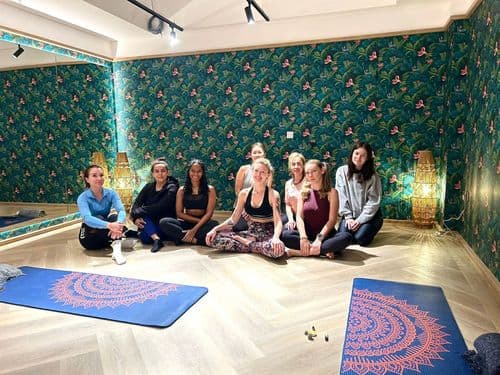What are Community Spaces & why are they important?
What are Community Spaces & why they matter by Vonder
A community space is ultimately defined by the community which builds, and then uses it.
A community space can take many forms, most of which will evolve with the nature and needs of the community it serves. Community spaces are often reinvented and revitalised as communities evolve likewise.
However the basic definition of a community space is one where people, within a neighbourhood or defined area, are able to come together to connect and build relationships through leisure, social, or educational activities.
Flexibility
A community space by its very nature must be flexible. Why? Because the community it serves is likely diverse, and it needs to be able to adapt its space to the needs of everyone. A community space will likely serve a community of all ages, from toddlers to the elderly, and everyone else in between. It may be somewhere to come together just for fun or somewhere a little more serious, for learning or education. The key is that it brings people together in a shared pursuit or provides the space for people to come together for individual pursuits with the option of connecting if they wish.
A community space can be new, or old. It can be purposefully built (like a library) or it can be something that evolves with time (like a book club that meets in a community space, only to evolve into a permanent lending library or service). It can be a space with many different uses, maybe it hosts a toddler playgroup in the morning, exercises classes for seniors after lunch, and adult training courses in the evening. Every day it may have a different specific purpose, but everyday it’s aim is to bring people together.
Often a community space is indoors but they can also be outdoors too. Shared allotments for communities to come together to grow plants, is one example. Or a community park that hosts outdoor performances, or displays local artwork in an open air exhibit, is another.
A community space may be privately or publicly run - however the crucial component of a community space is accessibility. It must be open to all in the community who have need for it. This makes it imperative also that community spaces are disability friendly, and accessible to everyone regardless of their unique needs.

Purpose
Ideally community spaces would be purposefully built, and beautifully designed for their specific purpose. But the true beauty and impact of community spaces lies in how they are used, and how the function for the people they serve. What is important is what happens within a shared community space, not necessarily how the building or space looks. If it brings people together, if it helps them connect, and if in the process it improves the wellbeing of a community, then it is doing what it was destined to do.
Impact
What is the power of a community space? Its real impact lies in its ability to bring people together - to forge social networks and connections within a neighbourhoods. This in turn is associated with an increase in civic engagement and helps residents feel more invested in where they live.
Community spaces promote equity and equality. By being accessible to all, they provide everyone with the same opportunities for social and leisure activities, and learning. They can ensure access to art and cultural activities and education that might not have been available otherwise.

People who feel connected to their neighbourhood take care of it better - and community spaces are credited with helping reduce anti-social behavior and crime rates. Not just because they give a neighbourhood somewhere to go, and something to do but because social connections between residents encourage everyone to respect and take care of their community.
Simplicity
Sometimes creating a community space can be incredibly simple. Research conducted in Chicago found that simply ensuring residential buildings had trees and green spaces around them, led to residents building more friendships and relationships with their neighbours, helped create a greater sense of community spirit and togetherness, and led to more people helping each other out through a myriad of different ways. In turn street crime reduced, as did levels of violence. That is the power of a community space.

Steps
There are a number of steps to consider before starting or reviving a community space. These include:
- Involve the community. They know what they want, how it will be used and what is important to a specific community. You want people to come to a community space, so understanding what they want is crucial to this.
- Design is important but how the space will be used is more important. Just because something looks great, doesn’t mean it will achieve what it intends to. Think about a community’s needs, comfort levels and what will draw them to the space.
- Work within the planning of your neighbourhood or community. A community space placed in an isolated part of town, might not attract the community. But a space in between a school, and a supermarket or other crucial urban services is more likely to attract the people it aims to serve.
- Start small - there may be many obstacles in the way of developing a truly amazing community space (including financial, bureaucratic and legal) but the aim is to get something started, and let it grow and evolve. And be prepared for the space to grow and change in ways you may not have envisioned, in fact when it is built for and grows with a community, it is likely to turn out more amazing than you ever thought.
In time community spaces can become the very heart and soul of a neighbourhood. What is needed is more action, both from the public and private sectors, to make accessible, functional and flexible community spaces accessible in more communities.
At Vonder we believe in the importance of community spaces, so much so that we have made them the heart and soul of our co-living complexes. Whether it is in our co-living London, Berlin, Warsaw or Dubai locations - community spaces are crucial to how we build relationships and connection.

Vonder Community Yoga Classes in Wembley, Munich and Beyond
Community Yoga Classes in Wembley, Munich, Warsaw & More
READ MORE
Co living East London With Vonder Shoreditch
Experience the best of modern living in London
READ MORE
What are Community Spaces & why are they important?
What are Community Spaces & why they matter by Vonder
READ MORE